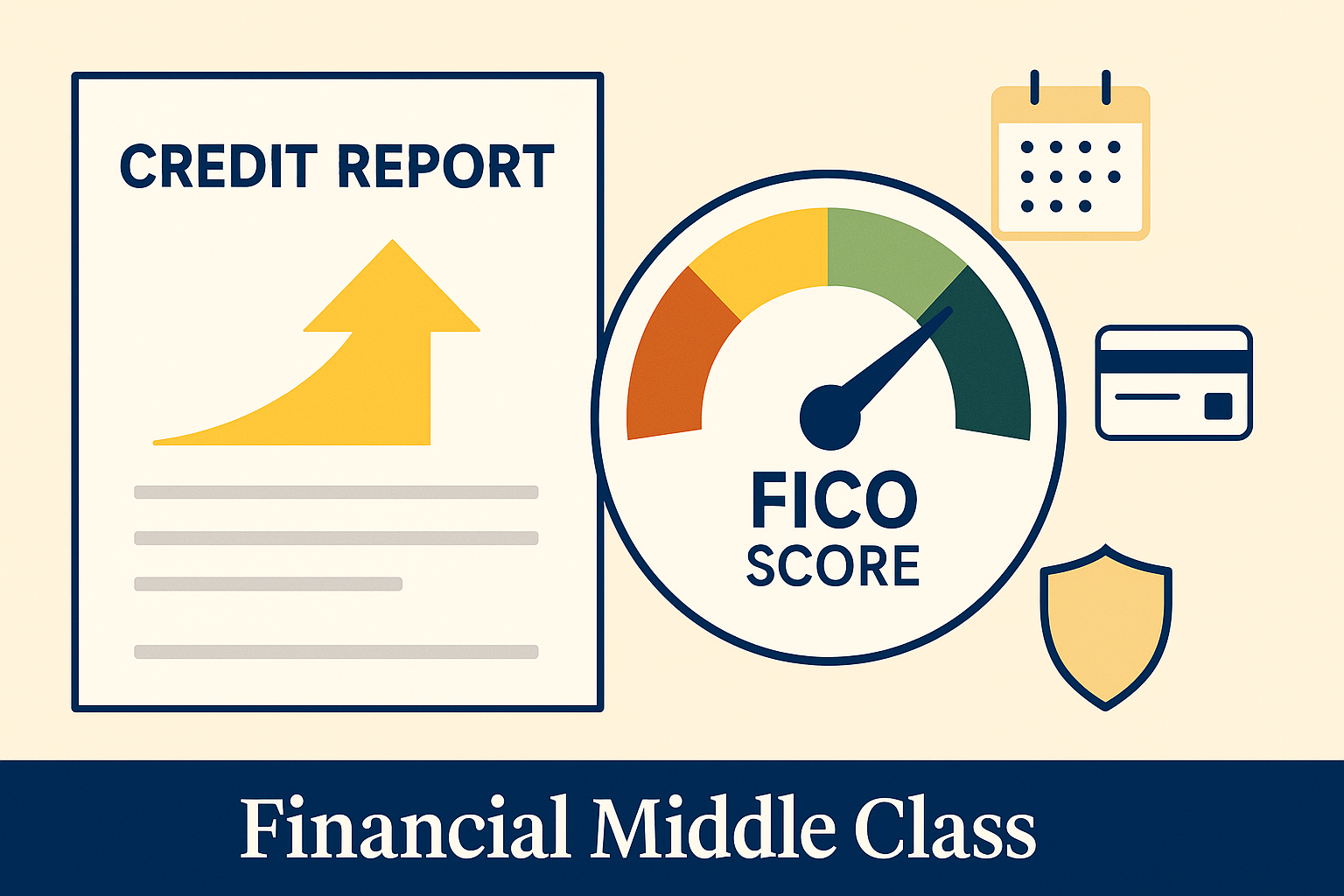
The middle class never bounced back from the 2008–09 financial crisis
By MacKenzy Pierre
The estimated reading time for this post is 329 seconds
The American middle class was feeling the gust front for months before the Katrina-like financial storm hit in 2008. The name of this financial storm could easily be subprime collateralized debt obligations (subprime CDOs). And they knew their financial lives would never be the same on the weekend of September 13–14, 2008 as they watched, live on television, Lehman Brothers’ employees clearing out their desks.
Before the crisis, the national homeownership rate peaked near 69% (2004) and is about 65–66% now; median family net worth grew about 18% between 2004 and 2007, but then fell nearly 39% between 2007 and 2010. About 52–53% of families had retirement accounts in 2007, with median balances around $32,000; by 2010, ownership and balances had slipped. For middle-income families, home equity made up roughly 45–50% of total assets, so when housing cracked, the middle class took the direct hit.
I was at an insurance training in St. Petersburg, Florida the weekend the bottom fell out of the U.S. economy in 2008. I was a junior employee at AIG’s retail financing arm. I remember the chaos because our training was cut short and we were told to go back home.
I worked at AIG for another two years after that. The retail financing arm of AIG was a multibillion-dollar operation. It financed and bought retail contracts, made personal loans, and wrote mortgages. I had a first-hand education in behavioral finance. I saw folks walking away from good and affordable mortgages because their neighbors walked away from their good and affordable mortgages. Strategic default, homeowners leaving their underwater homes, exacerbated the housing crisis.
However, strategic default was only a small part of the story. Folks defaulted and walked away from their homes because they lost their jobs, or businesses, or both, so they could not afford their home.
After the dust settled, U.S. household net worth fell about $16–17 trillion from the 2007 peak to the 2009 trough. Home prices fell about 30% nationally. From 2007 to 2016, there were roughly 7.8 million completed foreclosures, and research suggests fewer than one-third of those families regained homeownership within a decade.
Nearly 20 years after one of the worst financial crises in the world, the middle class never bounced back from it—and many may never do so—due to permanent job losses, foreclosures, and reduced savings.
How the Middle Class Was Built
The Roaring ’20s were quickly followed by the Great Depression, which lasted roughly 14 years, and it took a four-term president and colossal government programs to subdue.
President Franklin D. Roosevelt, the only president who served four terms, launched the New Deal, created Social Security and the SEC, and enacted the Glass–Steagall Act. More importantly, the New Deal created jobs—lots of them. The U.S. government built dams, bridges, roads, and other gigantic infrastructure projects that revitalized the economy and cemented the “white picket fence” as an American ideal.
Social Security made sure elderly Americans no longer retired in abject poverty, the SEC provided investor protections, and Glass–Steagall built a wall between commercial and investment banks. However, the U.S. middle class as we know it today did not start taking shape until after World War II.
While the French and the rest of the world were trying to “imagine Sisyphus happy,” Americans were ready to put the misery of one of the world’s most egregious and deadly wars behind them. After all, they were somewhat forced into it. By the end of World War II, more than 60 million people lost their lives, including 418,500 Americans.
After the war, Congress passed and President Roosevelt signed the Servicemen’s Readjustment Act of 1944—aka the GI Bill of Rights—which provided tuition and stipends for college or vocational training and low-down-payment home loans to veterans returning from the war.
The GI Bill of Rights ushered in a majority middle class in America, and many of the country’s ideals and phrases such as “white picket fence” and American exceptionalism were birthed around that time as well. Even African Americans started to believe in those ideals even though many were carved out of those programs due to racism and prejudice.
The New Deal and the GI Bill not only created a majority middle class in America, they made it resilient. The American middle class survived the civil rights movement, the assassinations of Dr. King, Malcolm X, and President Kennedy, and the political unrest due to the Vietnam War, the Cuban Missile Crisis, 1970s stagflation (high unemployment and high inflation), the early-1990s downturn, and the dot-com bust. However, with nearly 20 years behind us, it appears that the 2008–2009 financial crisis did break it.
In 1999, President Bill Clinton signed the Gramm–Leach–Bliley Act, which rolled back key Glass–Steagall provisions, blurring the line between commercial and investment banks. Around the same time, after the dot-com bust, the Federal Reserve cut interest rates aggressively before later hiking them. Increasing homeownership in America, especially among low- and moderate-income Americans, was also a policy priority in the 1990s.
The real estate industry got hit by a perfect trifecta—a motivated president, cheap money, and speculators who needed a new shiny financial asset to speculate on. Speculators who did well during the dot-com bubble and had plenty of capital salivated at the idea of turning every American into a homeowner regardless of their financial situation and ability to repay the mortgage.
Wall Street was more than happy to help. They took a straightforward asset like a home and turned it into something unrecognizable—mortgage-backed securities (MBS), collateralized mortgage obligations (CMOs), subprime CDOs, credit default swaps, and others. Securitization expanded from government-insured mortgages to private-label MBS and subprime-mortgage-backed structures.
Private-label MBS backed by subprime loans created stratospheric demand for new mortgages, which gave birth to predatory mortgage originators. And they took their job seriously. During peak origination volume, Countrywide, New Century, and Ameriquest originated over $400 billion, about $42 billion, and about $50 billion, respectively.
Wall Street needed more loans to package, and originators needed more folks to give loans to, therefore creating a doom loop. Mortgage originators not only lowered credit requirements for borrowers; they offered “no-doc” or stated-income, interest-only, and negative-amortization loans—the borrowed principal went up rather than down (or stayed flat in interest-only loans) because borrowers weren’t even covering accrued interest.
The bad feedback loop did turn borrowers into miniature speculators. Rather than seeing their home as shelter, they started seeing it as a financial asset with stratospheric appreciation potential. They took out home equity loans or HELOCs, or refinanced and took cash out to pay down credit cards, renovate kitchens, go on vacations—or, like true speculators, to buy a second or third home–until the music stopped.
Senior Accounting & Finance Professional|Lifehacker|Amateur Oenophile
RELATED ARTICLES
A Plan to Grow Your FICO® Score (Without the Gimmicks)
The estimated reading time for this post is 599 seconds Reality Check You don’t need another lecture. You need a plan that works in the middle of real life—when the rent is due, the car needs brakes, and your credit...
Estate Planning for Your Digital Assets
The estimated reading time for this post is 489 seconds You’ve got a will for the house and the car. Good. But what about the stuff that actually runs your life—email, bank logins, bill-pay portals, cloud photo albums, a PayPal...
1 Comment
Leave Comment
Cancel reply

A Plan to Grow Your FICO® Score (Without the Gimmicks)

Estate Planning for Your Digital Assets

Food Inflation vs. Holiday Menus: Feast Without the Financial Hangover
Gig Economy
American Middle Class / Oct 29, 2025
A Plan to Grow Your FICO® Score (Without the Gimmicks)
The estimated reading time for this post is 599 seconds Reality Check You don’t need another lecture. You need a plan that works in the middle...
By Article Posted by Staff Contributor
American Middle Class / Oct 29, 2025
Estate Planning for Your Digital Assets
The estimated reading time for this post is 489 seconds You’ve got a will for the house and the car. Good. But what about the stuff...
By Article Posted by Staff Contributor
American Middle Class / Oct 27, 2025
Food Inflation vs. Holiday Menus: Feast Without the Financial Hangover
The estimated reading time for this post is 185 seconds You can feed a full house without making your card issuer fat and happy. The trick...
By Article Posted by Staff Contributor
American Middle Class / Oct 27, 2025
The Middle-Class Holiday Travel Playbook (Thanksgiving & December)
The estimated reading time for this post is 263 seconds Travel is where good budgets go to die. Prices spike, emotions run hot, and suddenly you’re...
By Article Posted by Staff Contributor
American Middle Class / Oct 26, 2025
How Much Do the Holidays Cost Middle-Class Americans?
The estimated reading time for this post is 274 seconds You already know the punchline: they cost more than we planned—financially and emotionally. Between Halloween, Thanksgiving,...
By Article Posted by Staff Contributor
American Middle Class / Oct 26, 2025
Black Friday & Cyber Monday: Deal or Theater?
The estimated reading time for this post is 221 seconds You don’t need more “doorbusters.” You need a plan that keeps you out of the interest...
By Article Posted by Staff Contributor
American Middle Class / Oct 26, 2025
Points, Buy-Downs, and Breakeven: Stop Lighting Money on Fire
The estimated reading time for this post is 402 seconds Reality Check: The Payment You Can Breathe With You don’t need another “rate hack.” You need...
By Article Posted by Staff Contributor
American Middle Class / Oct 26, 2025
Mortgage Recast: The Low-Cost Way to Shrink Your Payment Without Refinancing
The estimated reading time for this post is 597 seconds Reality Check You sold the old house but the new one closed first. Now you’re sitting...
By Article Posted by Staff Contributor
American Middle Class / Oct 24, 2025
🏠 The House That Built (and Broke) the Middle Class: How Much Home Should Americans Really Buy
The estimated reading time for this post is 418 seconds You can tell a lot about someone’s economic standing by their mortgage application. The size of...
By MacKenzy Pierre
American Middle Class / Oct 24, 2025
How to Fight Financial Fraud (Without Losing Your Sanity—or Your Savings)
The estimated reading time for this post is 561 seconds Reality Check You don’t wake up planning to get scammed. No one does. It starts with...
By Article Posted by Staff Contributor
Latest Reviews
American Middle Class / Oct 29, 2025
A Plan to Grow Your FICO® Score (Without the Gimmicks)
The estimated reading time for this post is 599 seconds Reality Check You don’t need...
American Middle Class / Oct 29, 2025
Estate Planning for Your Digital Assets
The estimated reading time for this post is 489 seconds You’ve got a will for...
American Middle Class / Oct 27, 2025
Food Inflation vs. Holiday Menus: Feast Without the Financial Hangover
The estimated reading time for this post is 185 seconds You can feed a full...




Pingback: Middle Class Finance - FMC